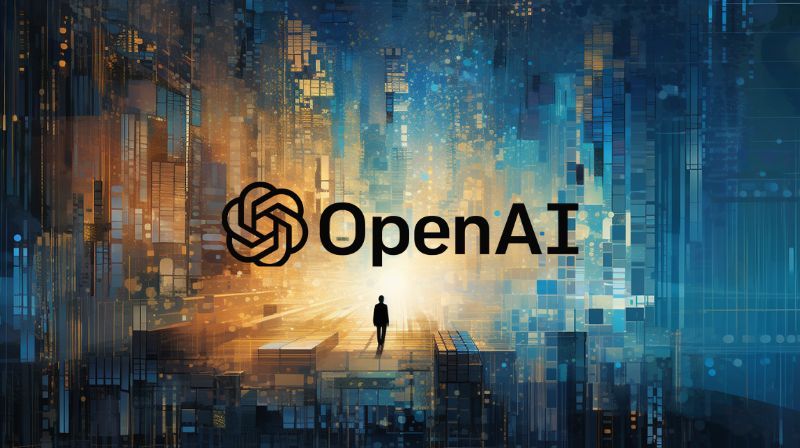OpenAI has just launched a ground-breaking update: the Code Interpreter. This new tool can redefine the way we analyze data, manipulate images, and even improve our software projects. Discover the key features and implications of this game-changer.
TLDR
- OpenAI's Code Interpreter is a powerful Python interpreter that runs in a sandbox, enabling complex data analysis, image processing, and code improvement tasks.
- Code Interpreter can derive insights from data sets and generate plots, convert and manipulate images, and provide critical analysis and improvement suggestions for existing code.
Key Facts
- Code Interpreter runs in a sandbox Python environment, creating a conversational Python session where each call builds on the previous one.
- Users can upload their files for analysis and download the results.
- For data analysis, Code Interpreter can generate descriptive statistics, handle missing values, and provide insights and plots derived from the data.
- In image processing, it can convert image formats, manipulate images, and even apply complex tasks like Edge detection.
- The interpreter can review existing Python code, accurately deduce its components, and suggest improvements like code refactoring, error handling, and better documentation.
Implications
- For Data Analysis: Code Interpreter has the potential to simplify and streamline data analysis, providing automated insights and visualizations.
- For Image Processing: It can handle a range of image manipulations, including format conversions and more complex tasks.
- For Software Development: This tool can offer constructive code reviews, suggest improvements and offer a virtual representation of the code base. This can enhance the quality of software projects.
The Birth of the Code Interpreter
The Code Interpreter from OpenAI, which could be seen as a significant upgrade since the release of GPT-4, is an extremely powerful Python interpreter running in a sandbox environment. This essentially means that throughout your session, you have your very own Python environment, capable of interpreting your code and returning the results. Built on top of GPT-4, this revolutionary update can be integrated into any software project to enhance the coding process.
Transforming Data Analysis
The Code Interpreter's primary application lies in its proficiency in data analysis. Given a dataset, the Code Interpreter can effectively analyze and draw meaningful insights. A demonstration with a New York City air quality dataset highlighted the following key features:
- Efficient Data Reading: It identifies different variables and measures, and assesses missing values.
- Descriptive Statistics Generation: It computes key statistics for each column.
- Insightful Analysis and Visualization: It autonomously derives insights, creates plots representing distributions, and visualizes data over time.
- File Conversion: It is capable of converting reports into downloadable PDF files.
Most impressively, it conducts all these operations using Python, giving the user access to the underlying code, which can be repurposed for any other dataset.
Innovating Image Manipulation
Beyond data analysis, the Code Interpreter shows proficiency in image manipulation. It offers features such as:
- Format Conversion: It can convert images from one format to another (e.g., PNG to JPEG).
- Image Resizing: It can transform an image into different dimensions, including square shapes.
- Color Modifications: It can convert images into grayscale.
- Advanced Processing: It can perform complex tasks like edge detection using specific algorithms.
Once again, the Code Interpreter executes all these operations sequentially using Python and provides the code for further use.
Upgrading Code Reviews
When integrated into software projects, the Code Interpreter becomes an automated code reviewer. Upon uploading your code, it provides a comprehensive analysis, offering a detailed understanding of your code and suggesting potential improvements. These improvements range from code refactoring, removing hard-coded parameters, enhancing error handling, and improving logging to adding user input validation and more.
To ensure a more efficient code structure, the Code Interpreter suggests re-implementing functions with improved structure and error handling. Moreover, it creates a virtual representation of the code base, revealing how different components interact with each other. The users can even ask it to provide more detailed comments, which is quite helpful for readability and future references.
Takeaway
OpenAI's Code Interpreter is a revolutionary tool that could transform the fields of data analysis, image processing, and software development. It combines the ability to interactively execute Python code with the capabilities of GPT, offering a variety of applications from data insights to code reviews and improvements. As this tool continues to evolve, we can look forward to even more powerful features and applications.
While Code Interpreter is a promising tool that has the potential to greatly simplify complex tasks and improve code quality, it is not perfect. It may still make some errors and its image manipulation features could be improved.
Despite its limitations, the tool marks a significant step forward in the field. Its ability to analyze code and provide meaningful insights and improvements can be a valuable asset for developers and data scientists. Its capabilities in data analysis and image processing are also impressive, with the potential to save a lot of time and effort.
As a user, what do you think about the Code Interpreter's features? How do you think they might impact your work? Let's keep the conversation going.







